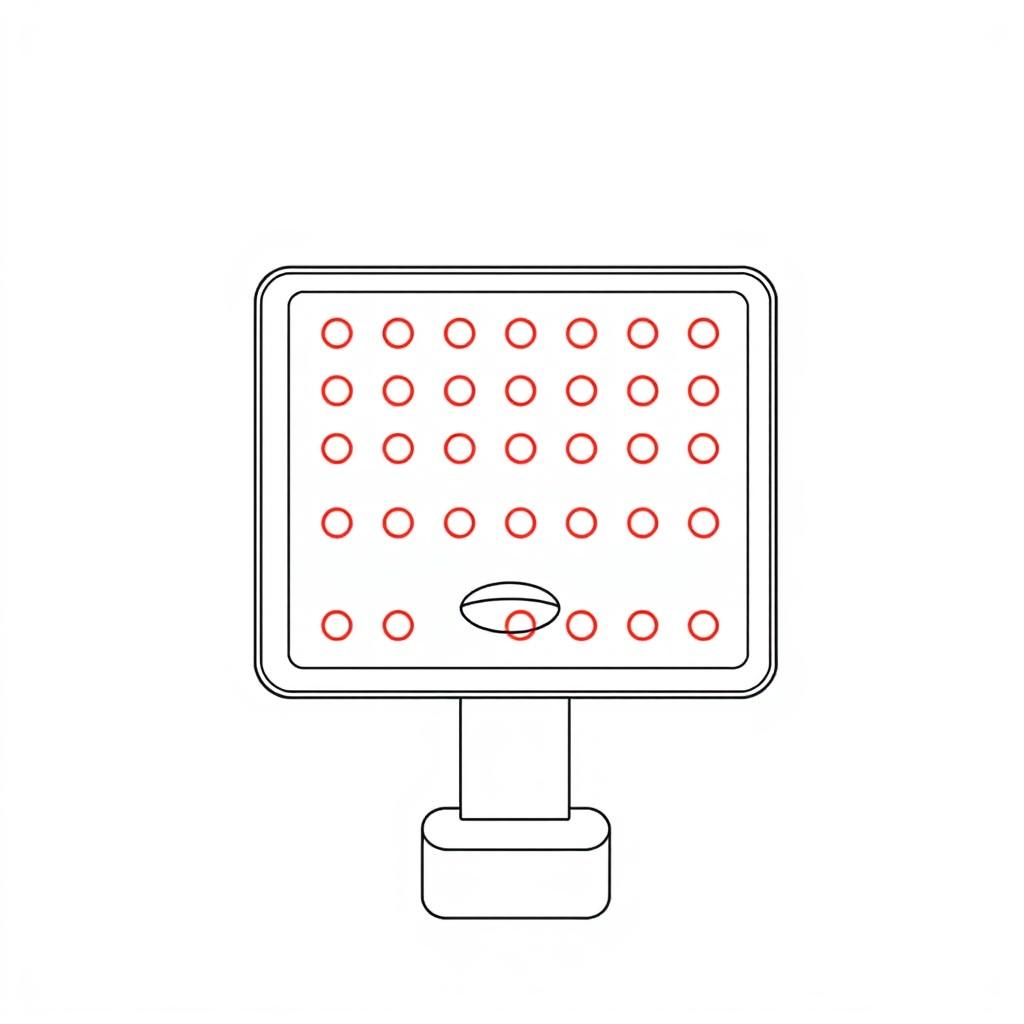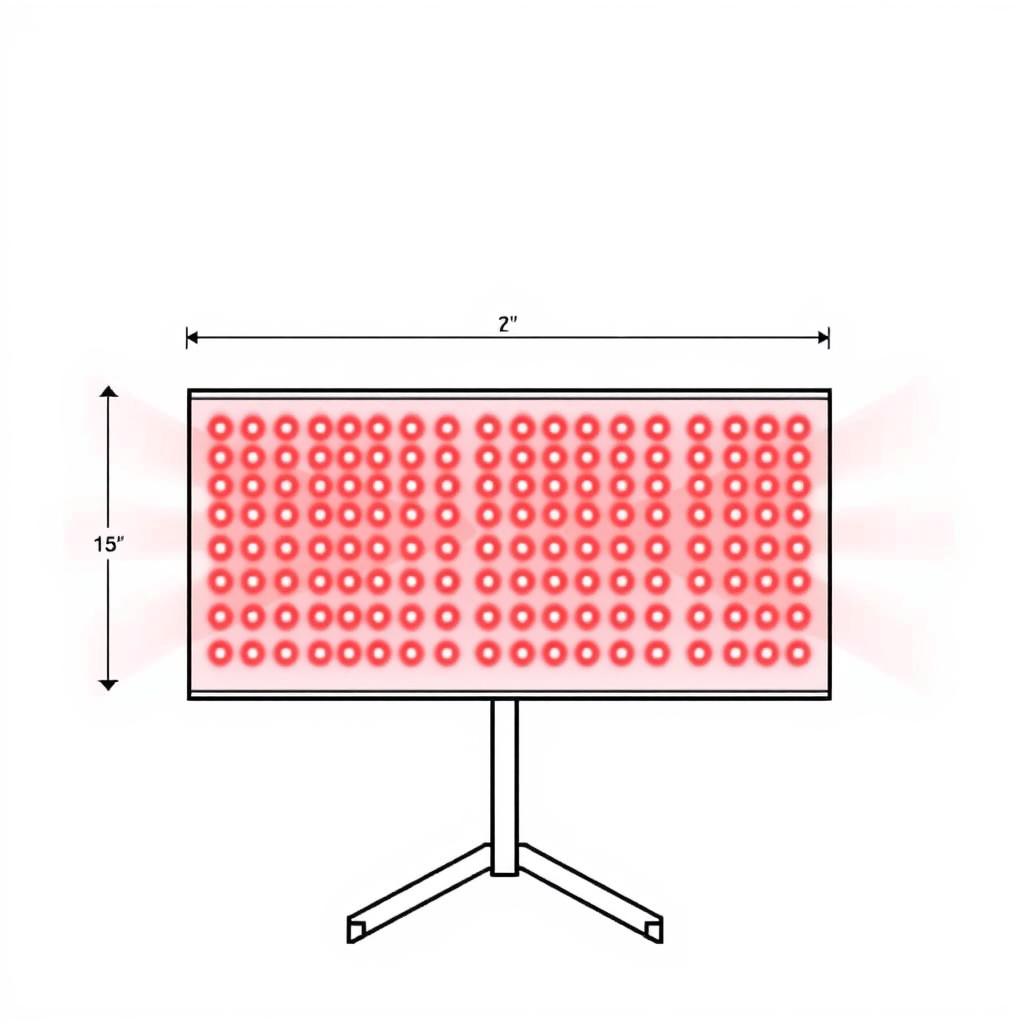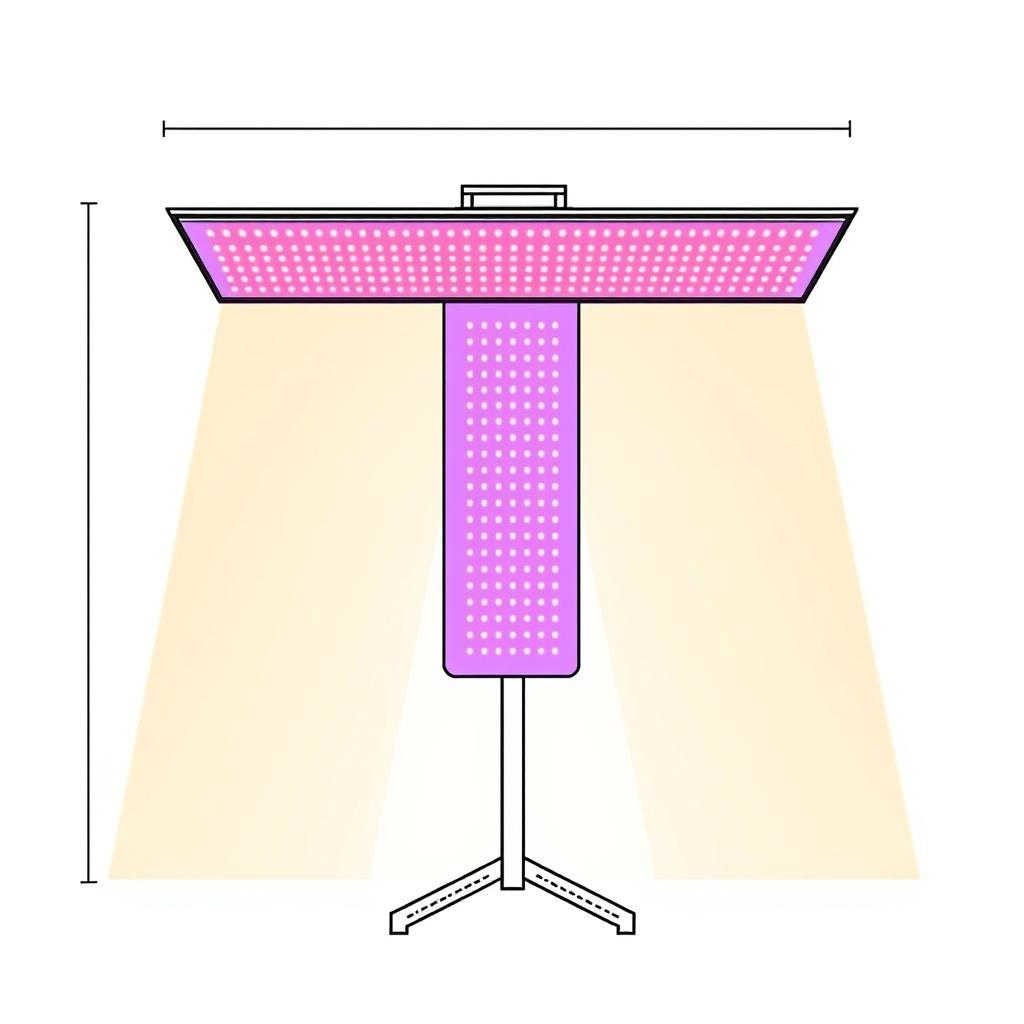Living with trigeminal neuralgia means enduring what many describe as one of the most excruciating pain conditions known to medicine. This chronic facial pain disorder affects the trigeminal nerve, causing episodes of intense, electric shock-like pain that can be triggered by everyday activities like eating, talking, or even a gentle breeze on your face. While conventional treatments exist, many patients continue searching for additional options to manage their symptoms effectively.
Red light therapy (RLT) has emerged as a potential complementary approach for managing neuropathic pain conditions, including trigeminal neuralgia. This evidence-based guide examines the science behind red light therapy for trigeminal neuralgia, reviews clinical research, and provides practical guidance for those considering this treatment option.
Understanding Trigeminal Neuralgia: The “Suicide Disease”
Trigeminal neuralgia (TN) is characterized by sudden, severe, electric shock-like pain along the distribution of the trigeminal nerve. This nerve has three branches that provide sensation to different areas of the face: the ophthalmic (forehead and eyes), maxillary (cheek, upper jaw, and nose), and mandibular (lower jaw) divisions.
According to the National Institute of Neurological Disorders and Stroke, trigeminal neuralgia affects approximately 12 out of 100,000 people per year, with higher rates among those over 50 and women more commonly affected than men.
The condition is often triggered by compression of the trigeminal nerve, typically by a blood vessel pressing against the nerve near the brainstem. This pressure damages the protective myelin sheath, causing the nerve to malfunction and transmit pain signals inappropriately. In some cases, TN may result from multiple sclerosis or other conditions that damage the myelin sheath.
Conventional Treatment Approaches
Standard treatments for trigeminal neuralgia include:
- Anticonvulsant medications (carbamazepine, oxcarbazepine)
- Muscle relaxants (baclofen)
- Microvascular decompression surgery
- Stereotactic radiosurgery (Gamma Knife)
- Rhizotomy procedures
- Nerve blocks
While these treatments can be effective, they often come with significant side effects or risks. Medications may cause drowsiness, dizziness, or cognitive impairment, while surgical options carry risks of infection, hearing loss, or facial numbness. This has led many patients to explore complementary approaches like red light therapy.
How Red Light Therapy Works for Nerve Pain
Red light therapy, also known as photobiomodulation (PBM) or low-level laser therapy (LLLT), uses specific wavelengths of red and near-infrared light to stimulate cellular function. These wavelengths typically range from 630nm to 1064nm and can penetrate skin and tissue to varying depths.
When applied to areas affected by trigeminal neuralgia, these therapeutic wavelengths may help in several ways:
Cellular Mechanisms
- Stimulates mitochondria to produce more ATP (cellular energy)
- Increases blood flow to damaged tissues
- Reduces oxidative stress that damages nerve cells
- Modulates inflammatory pathways
Neurological Effects
- Reduces nerve sensitivity and pain transmission
- Promotes nerve regeneration and remyelination
- Inhibits pain signaling pathways
- Stabilizes neural membranes
Scientific Evidence for Red Light Therapy and Neuropathic Pain
While research specifically on red light therapy for trigeminal neuralgia is limited, several clinical studies have demonstrated its effectiveness for neuropathic pain conditions:
A 2019 study by Holanda et al. found that patients with trigeminal neuralgia who received 12 sessions of 830nm laser therapy experienced a 58% reduction in pain intensity compared to just 9% in the placebo group.
In a 2017 systematic review by Cotler et al., researchers analyzed 13 studies on photobiomodulation for neuropathic pain and found consistent evidence that wavelengths between 780-905nm were effective at reducing pain scores and improving nerve function.
Chow et al. (2011) conducted a double-blind, randomized controlled trial using 830nm laser therapy on patients with chronic neck pain. They found significant reductions in pain and improvements in neurological function that lasted up to 22 weeks after treatment.
These studies suggest that red and near-infrared light therapy may offer a non-invasive, drug-free approach to managing neuropathic pain conditions like trigeminal neuralgia, with minimal side effects.
Ready to Try Red Light Therapy for Your Trigeminal Neuralgia?
Compare the most effective red light therapy panels side-by-side to find the right option for your needs.
Optimal Wavelengths for Trigeminal Neuralgia Relief
Not all wavelengths of light are equally effective for treating trigeminal neuralgia. Research indicates that specific wavelengths offer optimal benefits for nerve-related conditions:
| Wavelength | Penetration Depth | Benefits for Trigeminal Neuralgia |
| 630-660nm (Red) | 2-3mm | Surface-level inflammation reduction, improved circulation to facial tissues |
| 810-830nm (Near-Infrared) | 30-40mm | Reaches superficial branches of trigeminal nerve, reduces nerve inflammation |
| 850nm (Near-Infrared) | 40-60mm | Deeper penetration to reach nerve roots, promotes nerve regeneration |
| 1064nm (Near-Infrared) | 60-100mm | Deepest penetration, may reach trigeminal ganglion, reduces central sensitization |
For trigeminal neuralgia, devices that offer a combination of these wavelengths may provide the most comprehensive benefits, targeting both superficial nerve branches and deeper nerve structures.
Expert Insight: A 2021 review by Hamblin et al. found that combining multiple wavelengths (e.g., 660nm + 850nm) produced superior outcomes for neuropathic pain compared to single-wavelength treatments, likely due to complementary mechanisms of action at different tissue depths.
Comparing Red Light Therapy Devices for Trigeminal Neuralgia
When selecting a red light therapy device for trigeminal neuralgia, several factors should be considered, including wavelength options, power output, treatment area coverage, and ease of use. Here’s how leading devices compare:
Key Features to Consider
- Multiple therapeutic wavelengths – Devices with both red and near-infrared options provide more comprehensive treatment
- Sufficient power output – Higher irradiance (mW/cm²) allows for shorter, more effective treatment sessions
- Treatment area coverage – Larger panels treat more area but smaller, targeted devices may be more practical for facial use
- EMF levels – Lower electromagnetic field emissions are preferable, especially for devices used near the head
- Flicker rate – Minimal flicker reduces potential for triggering pain episodes
Leading Red Light Therapy Panels

Targeted Treatment Options
For focused treatment of trigeminal nerve branches, compact devices like the Total Spectrum Mini with its 72 LEDs provide precise application. This pocket-sized panel is ideal for desk or bedside use, allowing targeted therapy to specific facial areas affected by trigeminal neuralgia.
Best for: Precise targeting of specific trigger points or nerve branches

Mid-Size Options
PlatinumLED offers excellent irradiance levels, delivering higher power output for potentially faster results. Meanwhile, the Total Spectrum Compact provides a balanced approach with its seven-wavelength mix that includes the critical 830nm and 850nm wavelengths shown to be effective for nerve pain.
Best for: Treating both facial areas and adjacent neck/shoulder regions that may contribute to pain

Full-Body Systems
Joovv excels with sleek, space-saving vertical designs that fit well in home environments. For comprehensive treatment, the Total Spectrum Ultra with its motorized stand allows for precise positioning and full-face coverage, with three programmable height presets for consistent sessions.
Best for: Whole-body treatment when trigeminal neuralgia coexists with other pain conditions
Budget Considerations
While premium panels offer more features and potentially better results, budget-friendly options are available:
- Mito offers entry-level panels at more accessible price points, though they may have fewer wavelength options
- Some clinics offer rental programs for home use before committing to purchase
- Consider cost per treatment area – smaller, targeted devices may be more economical for facial-specific treatment
Practical Treatment Protocol for Trigeminal Neuralgia
Based on clinical research and expert recommendations, here’s a practical protocol for using red light therapy to manage trigeminal neuralgia symptoms:
Treatment Frequency and Duration
| Phase | Frequency | Session Duration | Total Period |
| Acute Pain Relief | Daily | 5-10 minutes per affected area | 1-2 weeks |
| Stabilization | 4-5 times per week | 10-15 minutes per affected area | 3-4 weeks |
| Maintenance | 2-3 times per week | 10-15 minutes per affected area | Ongoing as needed |
Application Technique
- Distance: Position the device 6-12 inches from the affected area (follow manufacturer guidelines)
- Coverage: Target all three branches of the trigeminal nerve (forehead, cheek, jaw)
- Timing: Best results often occur when used consistently at the same time each day
- Complementary approach: Continue prescribed medications unless directed otherwise by your healthcare provider
Important Safety Note: Always consult with your healthcare provider before beginning red light therapy, especially if you have photosensitivity, are taking photosensitizing medications, or have active cancer. While red light therapy is generally considered safe, individual medical circumstances vary.
Tracking Progress
Keep a pain journal to monitor your response to treatment, noting:
- Pain intensity (0-10 scale)
- Frequency of pain episodes
- Duration of pain episodes
- Triggers that provoke pain
- Medications used and dosages
A 2020 study by Chen et al. found that patients who maintained consistent treatment logs showed better adherence to therapy protocols and reported greater satisfaction with their results. Most participants in their study reported noticeable improvements after 2-3 weeks of regular treatment.
Integrating Red Light Therapy with Other Treatments
Red light therapy works best as part of a comprehensive approach to managing trigeminal neuralgia. Consider integrating it with:
Medical Treatments
- Continue prescribed medications as directed
- Discuss potential medication adjustments as symptoms improve
- Consider nerve blocks for breakthrough pain
- Maintain regular neurologist appointments
Complementary Approaches
- Acupuncture (shown to reduce TN pain in some studies)
- Stress reduction techniques (stress often triggers episodes)
- Gentle facial exercises as tolerated
- Nutritional approaches to reduce inflammation
Potential Synergistic Effects
Research suggests that red light therapy may enhance the effectiveness of conventional treatments. A 2018 study by Pinheiro et al. found that patients who combined low-level laser therapy with carbamazepine required 37% lower medication doses to achieve pain control compared to those using medication alone.
The Total Spectrum Elite panel, with its seven human-validated wavelengths and pre-built “Pain & Inflammation” and “Neuro” modes, offers a comprehensive approach that can be easily integrated with conventional medical treatments. Its zero measurable EMF at treatment distance makes it particularly suitable for regular use near sensitive facial nerves.
Patient Success Story: In a case study published by Vernon and Hasbun (2018), a 61-year-old woman with medication-resistant trigeminal neuralgia experienced complete pain relief after 12 sessions of 808nm laser therapy. She remained pain-free at the 6-month follow-up, allowing her to discontinue medications that had caused significant side effects.
Frequently Asked Questions About Red Light Therapy for Trigeminal Neuralgia
How long does it take to see results with red light therapy for trigeminal neuralgia?
Most clinical studies show that patients begin experiencing some relief after 6-12 sessions, typically within 2-3 weeks of consistent treatment. However, individual responses vary based on condition severity, wavelengths used, and treatment consistency. A full course of 20-30 sessions may be needed for optimal results.
Can red light therapy replace my trigeminal neuralgia medications?
Red light therapy should be considered a complementary approach rather than a replacement for prescribed medications. Some patients report being able to reduce their medication dosage under medical supervision after consistent RLT use, but this varies by individual. Always consult with your healthcare provider before making any changes to your medication regimen.
Are there any side effects of red light therapy for facial use?
Red light therapy is generally well-tolerated with minimal side effects. Some users report temporary redness or warmth in the treated area, which typically resolves quickly. Unlike UV light, red and near-infrared wavelengths do not damage skin or increase cancer risk. However, proper eye protection should be used during treatment, and those with photosensitivity conditions should consult their doctor.
Which wavelengths are most effective for trigeminal neuralgia?
Clinical research suggests that near-infrared wavelengths between 810-850nm show the strongest evidence for neuropathic pain relief, as they penetrate deeply enough to reach nerve structures. The 1064nm wavelength may provide additional benefits by reaching deeper nerve roots. Devices that combine multiple wavelengths (like the Total Spectrum series with seven validated wavelengths) may offer more comprehensive benefits.
Can I use red light therapy if I’ve had surgical treatment for trigeminal neuralgia?
Many patients use red light therapy after surgical interventions, especially if they continue to experience some pain. However, it’s essential to consult with your neurosurgeon before beginning treatment. Wait until surgical wounds are fully healed (typically 4-6 weeks) before applying light therapy to previously operated areas.
Conclusion: Is Red Light Therapy Right for Your Trigeminal Neuralgia?
The research on red light therapy for trigeminal neuralgia, while still emerging, shows promising results for pain reduction and improved quality of life. With its non-invasive nature and minimal side effects, red light therapy represents a valuable complementary approach to conventional treatments.
When selecting a device, consider factors like wavelength options, power output, treatment area, and ease of use. The Total Spectrum series offers comprehensive wavelength coverage with its seven human-validated wavelengths, including the critical 810nm, 830nm, and 850nm ranges shown most effective for neuropathic pain in clinical studies.
Remember that consistency is key—regular treatments following the recommended protocol will likely yield better results than sporadic use. Track your progress, and don’t hesitate to consult with healthcare providers about integrating red light therapy into your overall treatment plan.
Find the Right Red Light Therapy Device for Your Needs
Compare leading red light therapy panels side-by-side to make an informed decision about which device best suits your trigeminal neuralgia management needs.
— David, independent RLT researcher

